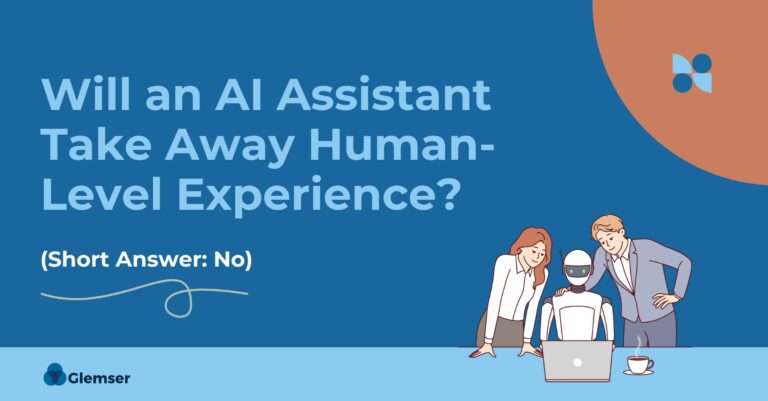
From hypodermic syringes to insulin pumps to inhalers, the pharmaceutical industry has long employed revolutionary technologies to help deliver safe, reliable drugs to market. Now, in the 21st century, innovative technologies such as artificial intelligence (AI) and machine learning are playing a crucial role in bringing life-saving therapies to market in a faster, more cost-effective way.
Digital transformation enabled by AI is affecting virtually every aspect of the pharmaceutical value chain and is bringing us closer to a future that is defined by radically interoperable data, open yet secure platforms, and consumer-driven health care.
But in doing so, is AI taking away human-level experience that has long been ingrained in the way drug labels, among other pharmaceutical content, are authored? The short answer is no.
AI Elevates Content Authoring Processes
The question of whether Artificial Intelligence (AI) takes away from human-level experience assumes that AI and humans have the same qualities and abilities — in reality, they don’t. AI-based machines are fast, highly accurate, and consistently rational, but they aren’t intuitive, emotional, or able to understand cultural nuances. And, in the context of pharmaceutical content authoring and the label review process, it’s exactly these qualities that humans possess which make us effective.
Instead of viewing AI as a threat, pharmaceutical labeling teams should embrace AI-powered content-authoring solutions to enable a more efficient and personalized approach to how they both engage with health authorities and ultimately impact healthcare professionals, patients, and other stakeholders.
Where AI Excels
AI-enabled tools are perfectly suited to be put to work in lower-level routine tasks that are repetitive and take place within a closed management system. In such a system, the rules of the game are clear and not influenced by external forces. Think, for example, of the cutting and pasting associated with transforming Core Data Sheets (CCDS) and label artwork to local label formats (USPI, SmPC, etc.). As the work is repetitive and subject to rigid procedures optimizing efficiency and productivity, AI performs faster and more accurately than labeling teams.
A recent Glemser study shows that combining existing structured authoring and component management systems with innovative, industry-specific AI- and ML-enabled tools can help reduce the time it currently takes pharmaceutical companies to develop and revise product labels by up 50%.
In addition to reducing manual and lower-value add efforts across labeling and regulatory teams, incorporating AI can also elevate overall team capabilities by driving a higher level of skill and efficiency in performing work.
For example, AI-enabled tools can crawl the labeling ecosystem to understand the content and context of data (regardless of what language it is in), providing actionable insights that would have been nearly impossible to uncover through manual processes. Instead of spending time copying and pasting, labeling teams can act upon those insights to achieve sustained quality and compliance, reduce costs, and even improve patient safety and outcomes.
Transforming Core Data Sheets into labels
Pharmaceutical companies can also harness the power of generative AI to transform CCDS language into sentences and sections that make sense for any given local label geography.
These tools use natural language capabilities to classify the language from CCDS, extract meaning from it to learn the content and context, predict the appropriate sentence structure depending on the desired local label geography, and then transform the data into multiple sentence options appropriate for the local label output.
This enables content authors to select the sentence that makes the most sense for the local label output, reducing cycle times and workload while allowing for an efficient and collaborative review process that maintains author control to ensure data integrity
Limitations of Using AI for Drug Labeling
While pharmaceutical companies can increase productivity, ensure sustained compliance, and improve quality through employing an AI-powered component-based authoring solution, they cannot realize the full benefits of the system without keeping a “human in the loop.”
AI tools are great at doing things like crawling the labeling ecosystem to understand the content and context of data, ingesting documents, and transforming and translating unstructured data into narratives for local geography labels, but they require human intervention to select reference documents and review outputs from automation, for example.
Current authoring solutions also stop short of uploading feedback from health authorities (as supporting documents), making the required language and formatting changes, choosing the appropriate sentence(s) for local label outputs based on geographical and cultural context, and acting on generated insights that allow for the adoption of industry best practices.
These parts of the label creation and update processes require detailed reviews and involvement from experienced professionals.
Keeping the “Human in the Loop”
For pharmaceutical companies seeking to automate their label authoring processes using artificial intelligence technologies, a unique combination of industry-trained AI models and structured content authoring software provides a powerful, trend-riding solution that keeps the “human in the loop.”
| SIDEBAR|| SAMPLE WORKFLOW WITH A HUMAN IN THE LOOP | ||||
| Workflow Step | User | Automated | ||
| 1 | Submit USPI to Health Authority and record submission date | X | ||
| 2 | Review document properties and audit properties for follow-up on Health Authority submission information | X | X | |
| 3 | Upload feedback from Health Authority as a supporting document | X | ||
| 4 | Link supporting document to USPI | X | ||
| 5 | Record Health Authority response | X | ||
| 6 | Adjust USPI based on Health Authority response | X | ||
| 7 | Re-approve label document, re-submit, and publish | X | ||
For instance, a continuous publishing engine paired with AI and ML capabilities will recognize the source data and the desired label output geography. These tools work in concert to transform core data sheet sections to the appropriate formatting and sentences to present to the human in the loop for review.
Additionally, we have configured our AI-powered solution as a component content management system (CCMS) that leverages industry-specific templates built from reusable modular components to generate outputs in compliance with health authority submission requirements. Anywhere required, we augment workflows to include a human in the loop to review and approve (via e-signature) outputs from automation.
Natural language technology provides omnichannel outputs with dynamic, data-rich narratives that appear as if written by a human. The review of the narratives produced via this generative AI capability calls for a human in the loop who understands culture, context, and compliance to ensure labels meet current evolving cultural and health authority requirements in each of the local label geographies.
Conclusion
So to answer our initial question, no, an AI assistant will not take away human-level expertise nor eliminate the need for a human in the loop. Both humans and AI have powerful and unique abilities that are essential for an efficient and streamlined regulatory submission process.
The introduction of AI into these processes is not meant to replace humans, but rather to empower them. With humans involved in various approval stages, pharmaceutical companies can take advantage of AI-powered structured content capabilities, while guaranteeing the integrity of the data and its outputs.
Want to enhance your teams capabilities with an AI assitant? Contact Glemser today to get started.


